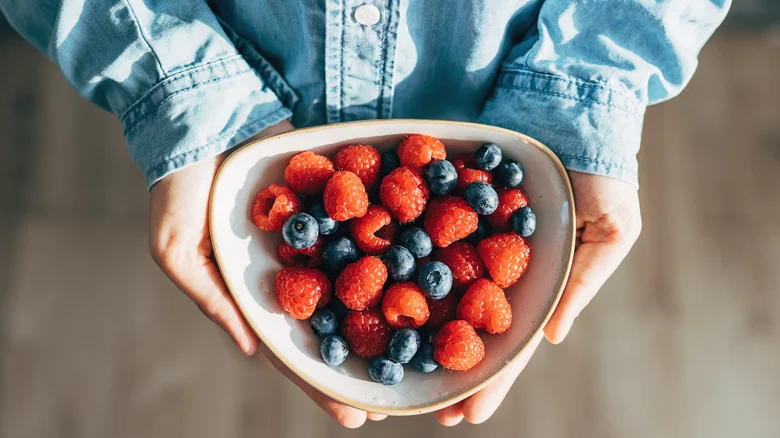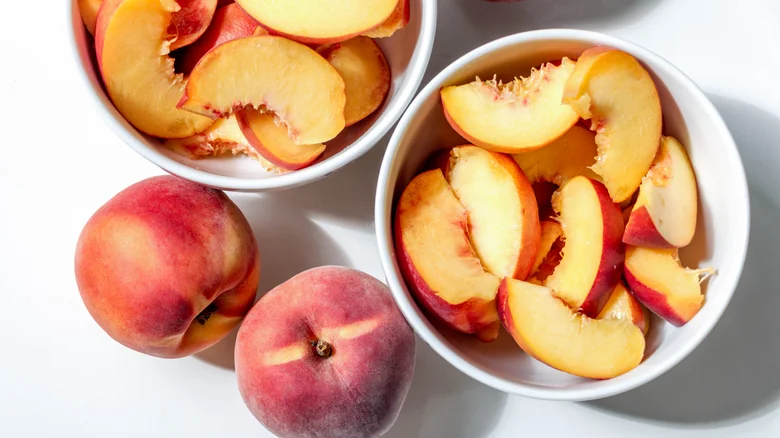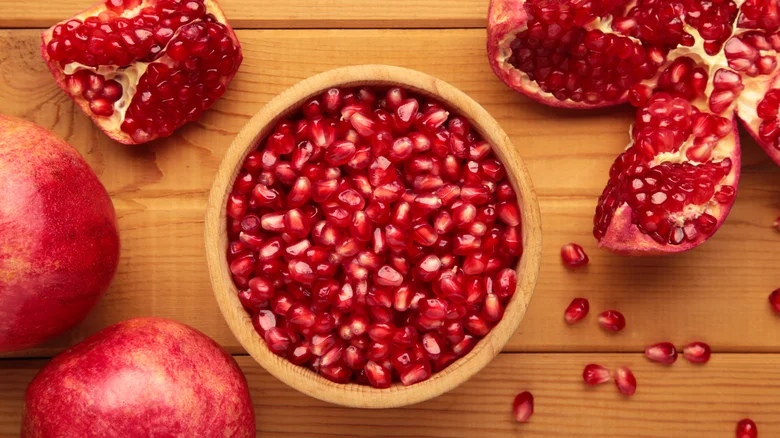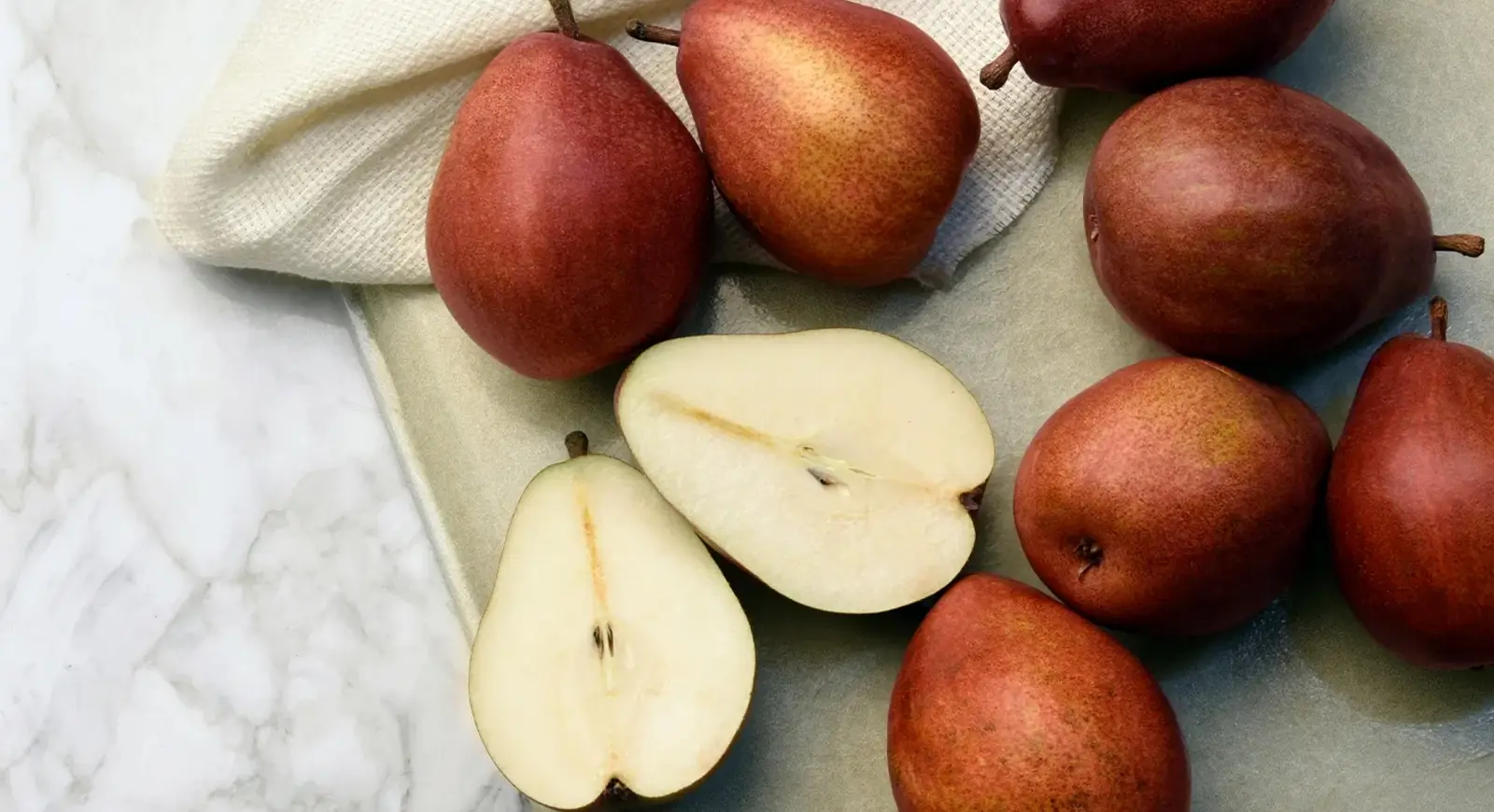According to the Centers for Disease Control and Prevention (CDC), managing your diet is a simple way to improve heart health and reduce the risk of heart disease. “Heart disease” encompasses potentially fatal conditions such as coronary artery disease (CAD), arrhythmias, heart failure, and heart attacks. A heart-healthy lifestyle is crucial because heart disease is the leading cause of death in the U.S., with a death occurring approximately every 33 seconds, per the CDC. Key risk factors include high blood pressure (hypertension) and high blood cholesterol (hypercholesterolemia), which damage blood vessels and promote plaque buildup in the arteries, increasing the risk of serious complications (according to Mayo Clinic).
Many people aiming to improve heart health start by choosing smarter foods. Fruits are often overlooked in heart-healthy diets, which usually focus on adding healthier fats and proteins. However, the American Heart Association states that choosing the right fruits can add a range of nutrients that support cardiovascular health, such as fiber, vitamins, minerals, and antioxidants, while keeping daily sugar intake in check. This article highlights 10 low-sugar fruits rich in heart-healthy compounds, perfect for those looking to take proactive steps toward better heart health, one meal or snack at a time.
Berries

Whether you prefer strawberries, blueberries, raspberries, or blackberries, berries are known for their powerful antioxidant content, and with an average of just 9 grams of sugar per cup, they are excellent for a heart-healthy, low-sugar diet. Their high concentration of anthocyanins, the antioxidant pigments responsible for their rich colors, is particularly beneficial for heart health, as explained in a 2020 review published in Molecules.
According to the review, anthocyanins are linked to lower triglycerides and LDL cholesterol levels (the “bad” type), as well as increased HDL cholesterol levels (the “good” type), making berries a potential candidate for heart disease prevention. A 2019 study in Advances in Nutrition found that high anthocyanin intake was connected to a 25% risk reduction for CAD and up to a 10% risk reduction for high blood pressure, especially noticeable in women over 60 years old.
Adding berries to your diet is both easy and delicious. You can add a handful to your morning oatmeal or yogurt, enjoy them as a snack, or use them as a topping for pancakes or chia pudding. Frozen berries are a great option for year-round nutritious smoothies or homemade baked goods.
Peaches

With their soft texture and sweet, juicy flavor, peaches are a seasonal summer delight, but their potassium content makes them a heart-smart addition to your diet. A medium-sized peach contains 12 grams of natural sugar and 179 milligrams of potassium, supporting heart health without spiking blood sugar levels. According to the Office of Dietary Supplements, potassium is essential for blood pressure regulation, helping blood vessels remain flexible and balancing sodium levels, reducing cardiovascular strain.
An animal study from 2019 in Nutrients found that peach extract might have natural antihypertensive effects. An older study from 2013 published in Food Chemistry suggested that peach extract might prevent the hormone angiotensin II from spiking, keeping blood vessels from tightening and raising blood pressure.
Peaches are versatile for both sweet and savory dishes. You can add fresh slices to yogurt, grill them for a caramelized dessert or salad topping, or blend them into a fresh dressing. Be cautious with canned peaches, as they may contain added sugars.
Watermelon

With just 9 grams of sugar per cup and a heart-healthy antioxidant content, watermelons are a hydrating, low-sugar fruit that can be a summer ally for your heart. Watermelon contains two key compounds beneficial for heart health: lycopene and L-citrulline.
A 2018 review published in Frontiers in Pharmacology explains that lycopene is a powerful antioxidant giving watermelon and other red-colored produce their color. Lycopene has heart-protective effects, including preventing plaque buildup, improving blood vessel function, and lowering LDL cholesterol levels.
Meanwhile, a 2022 study in Nutrition, Metabolism & Cardiovascular Diseases says that L-citrulline, an amino acid, helps produce nitric oxide, relaxing blood vessels and improving circulation, thus reducing blood pressure. According to a 2019 study in Nutrients, consuming 2 cups of watermelon daily lowered systolic blood pressure compared to consuming low-fat cookies, attributed to L-citrulline content.
To include more watermelon in your diet, enjoy it fresh as a snack or dessert, or blend it into smoothies or juices. For a savory twist, pair it with feta cheese and mint for a summer salad or add it to salsa with lime and chili for a flavorful topping.
Grapefruit

Grapefruits are often seen as weight loss-friendly and find their way into many fad diets. However, they are also highly nutritious and offer multiple health benefits, including boosting immune, skin, kidney, and heart health, according to Healthline. With about 12 grams of sugar per cup, they’re a low-sugar fruit compared to many others, making them a smart choice for those monitoring sugar intake.
An older 2014 test-tube and animal study in the Journal of Food and Drug Analysis suggests that flavonoids in grapefruits make them heart-healthy. The study found that grapefruit juice lowered total cholesterol, triglycerides, and LDL cholesterol levels while increasing HDL cholesterol in rats on a high-cholesterol diet, reducing the risk of atherosclerosis. The juice may reduce cholesterol by increasing cholesterol and bile acids in bile, aiding in cholesterol excretion through the digestive system. Flavonoids also inhibit ACE activity, supporting relaxed blood vessels and better blood flow, contributing to lower blood pressure.
To add more grapefruit to your diet, enjoy it fresh in slices for breakfast or add it to a fruit salad. However, grapefruit can interact with certain medications, so consult your doctor beforehand.
Apples

Known for their crisp texture and natural sweetness, apples are a heart-friendly fruit that can also help manage blood sugar. A small apple (about 165 grams) contains around 20 grams of natural sugar, but apples have a low glycemic index (GI) of about 36, which helps prevent blood sugar spikes. According to Healthline, GI values under 55 are considered low. Additionally, an older 2015 review in Nutrients states that apples’ fiber and antioxidants (pectin and polyphenols) contribute to their heart-healthy status.
The review says that pectin and polyphenols lower cholesterol by promoting bile acid excretion. Pectin, a soluble fiber, also inhibits cholesterol absorption. For blood pressure control, flavonoids in apples improve blood vessel function by increasing nitric oxide. A 2019 study in The American Journal of Clinical Nutrition found that high-cholesterol individuals who ate two apples a day had reduced triglycerides, total cholesterol, and LDL cholesterol, as well as improved blood vessel function.
To add more apples to your diet, enjoy them raw as a snack, mix with yogurt, toss into a salad, cook with oatmeal, or bake with cinnamon for a sweet treat.
Avocado

Avocados, known for their creamy texture, are a fruit with a remarkable heart-healthy nutrient profile. With just 1 gram of sugar per cup, they’re extremely low in sugar. A 2018 review in The American Journal of Clinical Nutrition reports that avocados are rich in monounsaturated fats (MUFAs), which help prevent heart disease by lowering LDL cholesterol while increasing HDL cholesterol. They also contain dietary fiber, which aids in lowering cholesterol, and have high potassium and magnesium content, essential for maintaining normal blood pressure. Overall, avocados are abundant in heart-friendly nutrients.
Incorporating avocados into your diet is easy and delicious. You can enjoy them for breakfast by making avocado toast, blending them into smoothies, or using them in salads, sandwiches, or as a topping for soups and bowls. Additionally, mashed avocados can substitute butter in baking recipes, showcasing their versatility in the kitchen.
Oranges

With their tangy flavor, natural sweetness, and heart-protective nutrients, oranges are a tasty snack. A medium-sized orange contains 14 grams of natural sugar, but its fiber content prevents blood sugar spikes. This fiber, along with flavonoid antioxidants, supports heart health.
An older 2010 study in Nutrition Research found that orange flavonoids, especially hesperidin and naringin, improved blood cholesterol profiles, even in juice form. The study determined that orange juice intake lowered LDL cholesterol levels while increasing free-cholesterol transfer to HDL cholesterol, meaning more cholesterol particles were carried away from arteries, preventing buildup.
Pectin, a soluble fiber in the orange’s white part, helps lower cholesterol through multiple mechanisms. A 2019 review in Nutrients explains that pectin forms a gel in the intestines, decreasing cholesterol absorption and promoting excretion. Fermentation of pectin in the large intestine produces short-chain fatty acids (SCFA), providing added cholesterol-lowering effects.
To include more oranges in your diet, enjoy them fresh or on top of salads, parfaits, or morning oats. Alternatively, enjoy their juice in moderation, as it’s more likely to spike blood sugar levels.
Kiwi

Kiwi may be small, but it packs a big nutritional punch, especially for heart health. With only 8.5 grams of natural sugar per 100 grams, kiwi is a low-sugar fruit. Among kiwi’s key heart-healthy nutrients are antioxidants and soluble fiber. A 2019 review in Diabetes, Metabolic Syndrome, and Obesity states that antioxidants promote nitric oxide production and prevent platelet aggregation, promoting blood vessel relaxation and preventing blood clots, improving blood flow and reducing blood pressure. Soluble fiber helps lower triglycerides and cholesterol by trapping them in the digestive system and aiding in removal.
An older 2004 study published in Platelets confirmed that eating up to three kiwis daily might reduce platelet aggregation by 18% and triglyceride levels by 15% compared to the control group. Similarly, another 2019 study in the Journal of Human Hypertension found that consuming three kiwis per day resulted in a 15% reduction in platelet aggregation and an 11% reduction in ACE activity, proving kiwi’s blood pressure-reducing properties.
Kiwi can be enjoyed on its own, added to yogurts or salads, or blended into smoothies. It can also enhance savory dishes. Try chopping it into salsas or serving it as a side at barbecues for a fresh twist.
Pomegranate

Pomegranate is known for its antioxidant power, ruby-red color, and tart flavor. With about 12 grams of sugar per ½ cup of seeds, it fits well into a heart-healthy, low-sugar diet. A 2018 review in Frontiers in Pharmacology states that pomegranate’s antioxidants, such as anthocyanins, proanthocyanidins, and flavonoids, offer cardio-protective effects by reducing oxidative stress and inflammation and protecting blood vessel walls, contributing to high blood pressure and atherosclerosis.
The review adds that drinking pomegranate juice might offer blood pressure-reducing benefits. Long-term pomegranate juice intake might reduce systolic blood pressure in those with hypertension, likely due to antioxidants inhibiting ACE activity.
To add this seasonal fruit to your diet, sprinkle seeds over salads or bowls for a fresh twist, or mix them into yogurt or oatmeal. Drink its juice or use it as a base for vinaigrettes or marinades. Be mindful of portion sizes if drinking the juice, as it can concentrate sugar content.
Plums

Sweet and juicy, with deep purple color, plums are nourishing for the heart. With about 6 grams of sugar per fruit, they’re a smart choice for those watching sugar intake.
Plums contain key nutrients for heart health. A 2023 review in the Journal of Nutritional Science highlights plums’ antioxidants, like vitamin C, phenolic acids, and flavonoids, which help lower total and LDL cholesterol levels. Their fiber content also helps control blood cholesterol levels.
A 2021 study in the Journal of Medicinal Food suggests that dried plums (prunes) may support better cholesterol levels and reduce inflammatory markers that increase heart problem risk. A 2019 animal study in Molecules suggests that prune extract may regulate blood pressure by promoting nitric oxide production and activating potassium channels, leading to blood vessel dilation and relaxation, ultimately lowering blood pressure.
Plums can be enjoyed fresh as a snack or grilled for salads. Dried plums (prunes) can be added to yogurt or oatmeal. Remember that dried plums have concentrated sugar content, so practice portion control.




